Textile artist Monique Day-Wilde is passionate about ‘place’ and the connection humans have with the unique flora and fauna that surrounds them. It’s no secret natural worlds vary across the globe, and carefully observing and enjoying those differences is what fuels Monique’s creative process.
A move to a small Cape Town village helped Monique push the boundaries of her textile art even further. Finding herself surrounded by thousands of diverse plant species, Monique decided to explore ways to use those plants as both subject and material.
Through a monoprinting process, leaves and stems are pressed into the ink, and then resulting prints are embellished with stitch. Initially, Monique worked mostly with fabric. But she’s now exploring the potential of paper and stitch to record the vibrant landscape that surrounds her.
We’re grateful to Monique for providing a look into her creative process, as well as describing her evolution from fabric to mixed media works. She also reminds us how a simple daily walk can inspire remarkable works of art.
If you’re looking for new and different ways to incorporate your own sense of place, this article is for you.
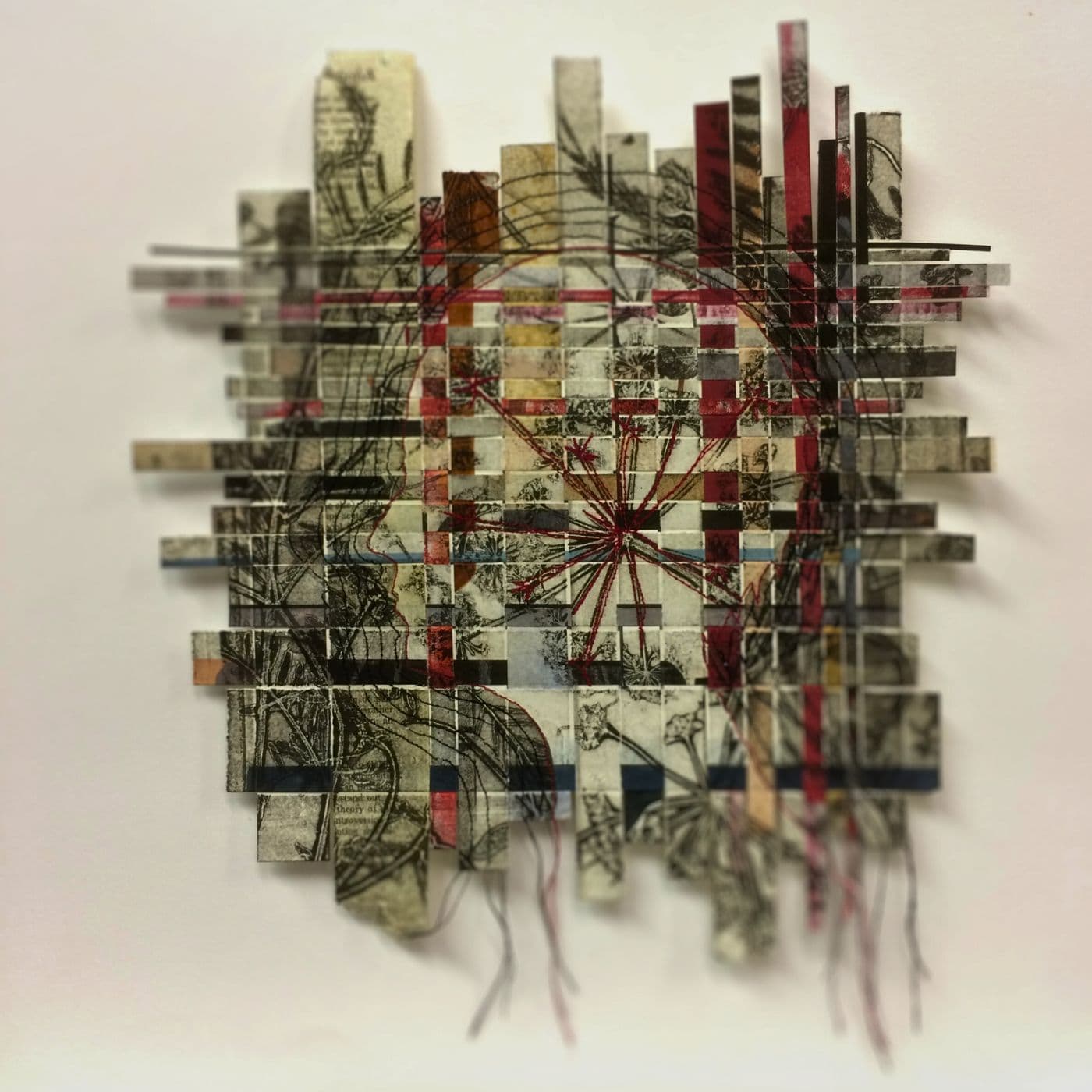
Artistic encouragement
TextileArtist.org: What initially attracted you to textiles as a medium? How was your imagination captured?
Monique Day-Wilde: It feels like I’ve always been involved in textiles one way or another. I was very close to my maternal grandmother, a weaver, who taught me to weave at a very early age and gave me my first loom at the age of 10.
I am always struck by how many textile artists have been influenced by a grandmother. And while I don’t weave on a loom anymore, I often use woven paper in my work.
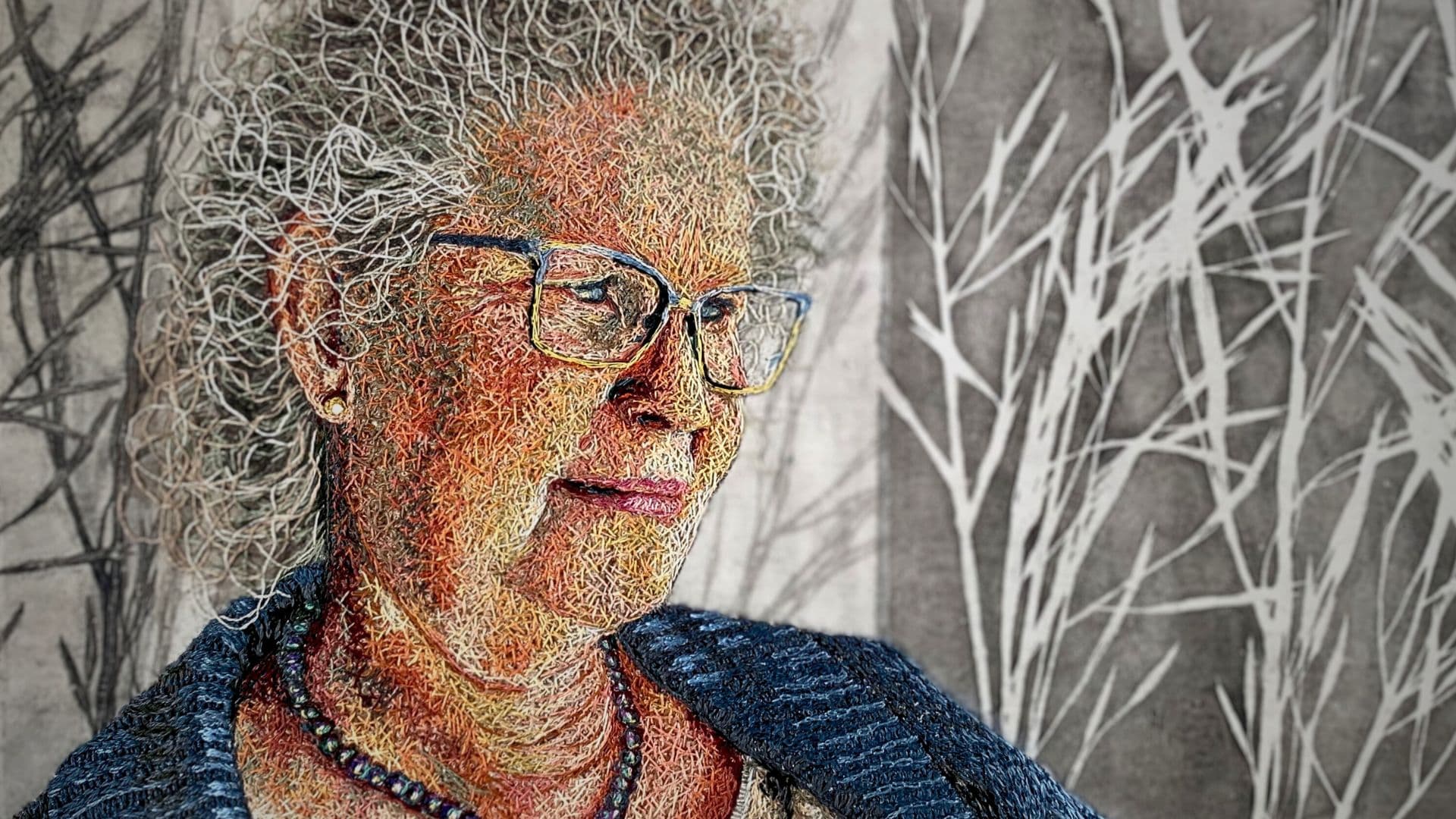
What or who were your early influences and how has your life/upbringing influenced your work?
My paternal grandfather was an artist too, so my parents never discouraged my art making ambitions, encouraging me when I decided to go to art school. I was never told to ‘get a proper job,’ even when times were tough. I am very grateful for that.
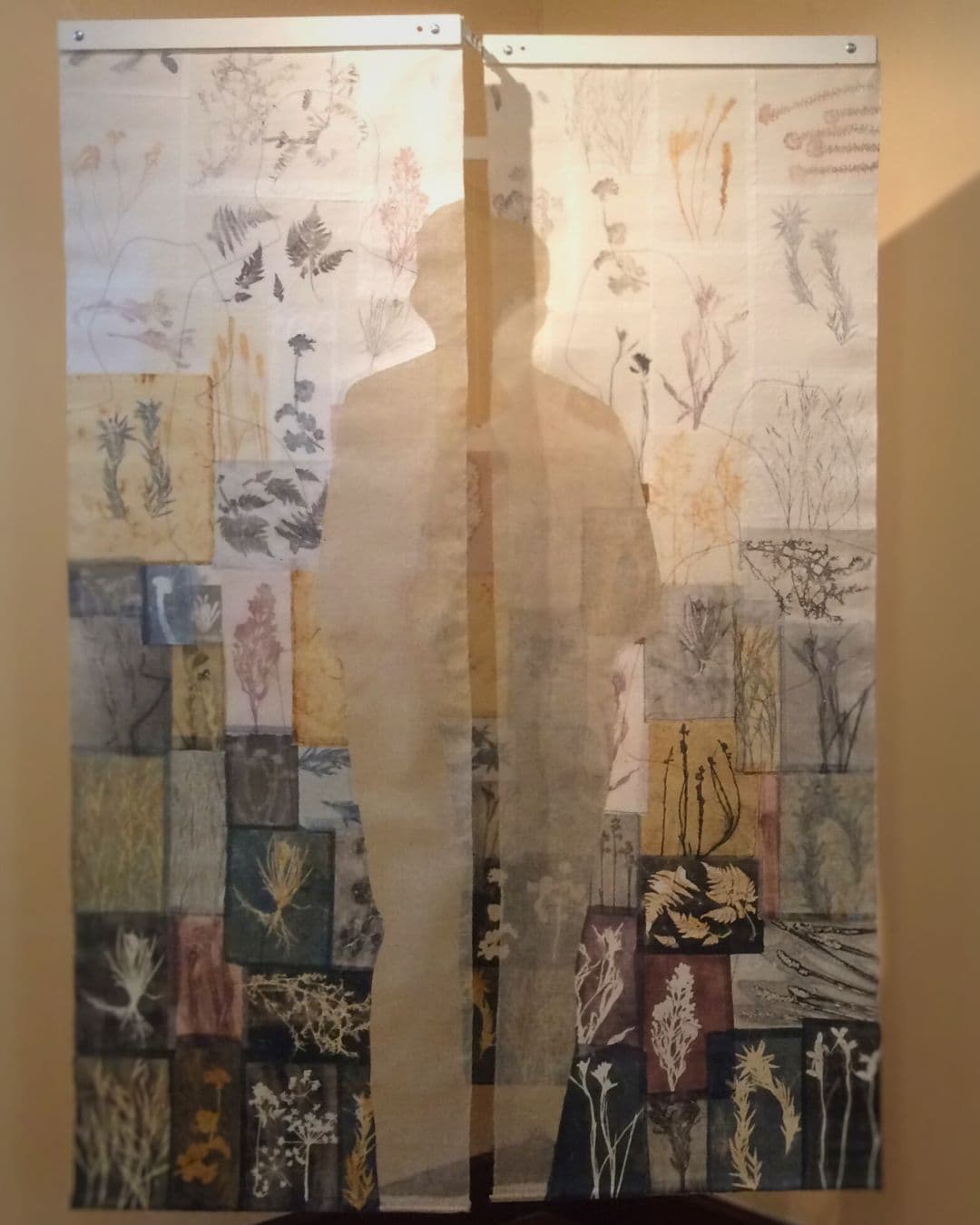
What was your route to becoming an artist?
I sold my very first painting at the age of five to an aunt’s friend, and that was all the encouragement I needed!
My school did not offer art as a subject, so for a while, I went to an after-school art facility. But I always drew and painted at home and knew exactly what I wanted to do when I finished school.
I managed to get into art school and completed a textile design course and a further diploma. I then started working in the hand weaving field where we spun, dyed and wove rugs and tapestries.
Later, when I had children, I lectured at the Art School in Bloemfontein and at the London School of Fashion (Johannesburg) where I taught textile construction.
When my children were young, I moved to Cape Town and started teaching from my home studio. I initially painted on fabric but evolved over the years to mixed media.
The techniques I’ve used over the years have also evolved, largely because of the books I’ve written.
Most recently, I have focused on the rich plant life in the environment outside Cape Town that surrounds me, combining printmaking and stitching.
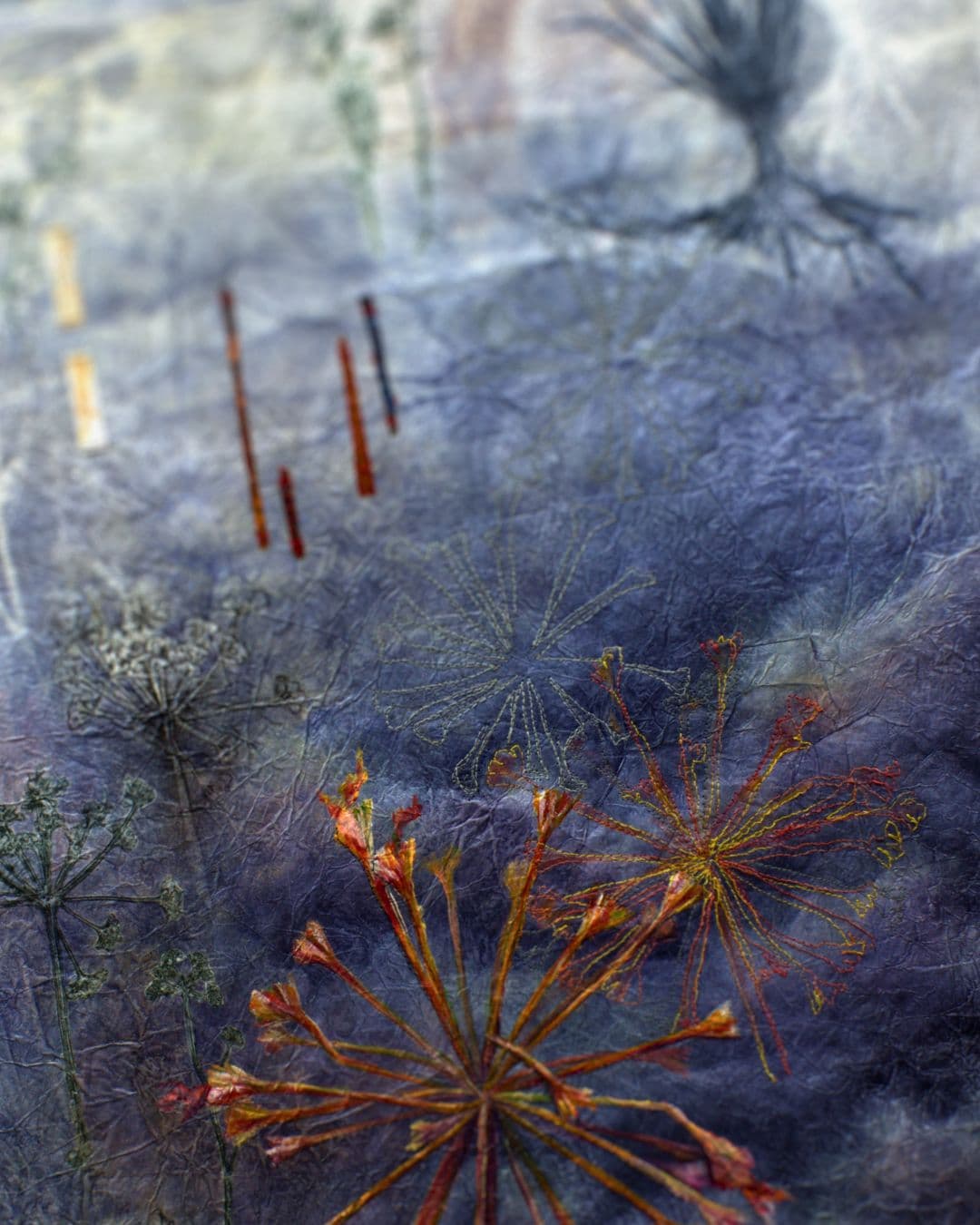
Monique Day-Wilde, Home Turf, 2019. 550 x 900mm. Botanical Prints on Paper, Collage, Acrylic ink, stitching.
Printing with plants
Tell us about your process from conception to creation
The work of each day usually begins with a walk – a visual expression of my own quiet experiences. I explore the treasures of nature and often collect plant samples and other found objects as tangible links to the landscape in I which I live.
I observe the colours, lines, textures, shapes and patterns of the environment, drawing on them constantly in my creative process. I especially delight in the small details.
My process is not structured at all. I respond to what I have to hand, arranging and re-arranging print material to make my prints, and ultimately, the prints themselves. I decide as I go what to do and how to proceed, often using sketches I make while out walking as a springboard for an idea.
When choosing plants to print, the phrase ‘use what you have, where you are’ resonates with me. I am inspired by the flowers, feathers, seaweed or other plants endemic to the Western and Eastern Cape, South Africa. Engendering a sense of place is important to me, and plants, in particular, create that for me. I wouldn’t be doing quite the same thing anywhere else in the world.
‘Fynbos,’ the umbrella term for mostly fine-leaved plants, are definitely my plants of choice for printing. I am careful, though, to only harvest what I need and only pick plants that grow in abundance.
Whatever the inspiration, I see each image representing a moment of stillness within the constant motion of life. I note the fragile, beautiful, and ephemeral – as is our human experience – all the while creating an intimate response to my materials and surroundings.
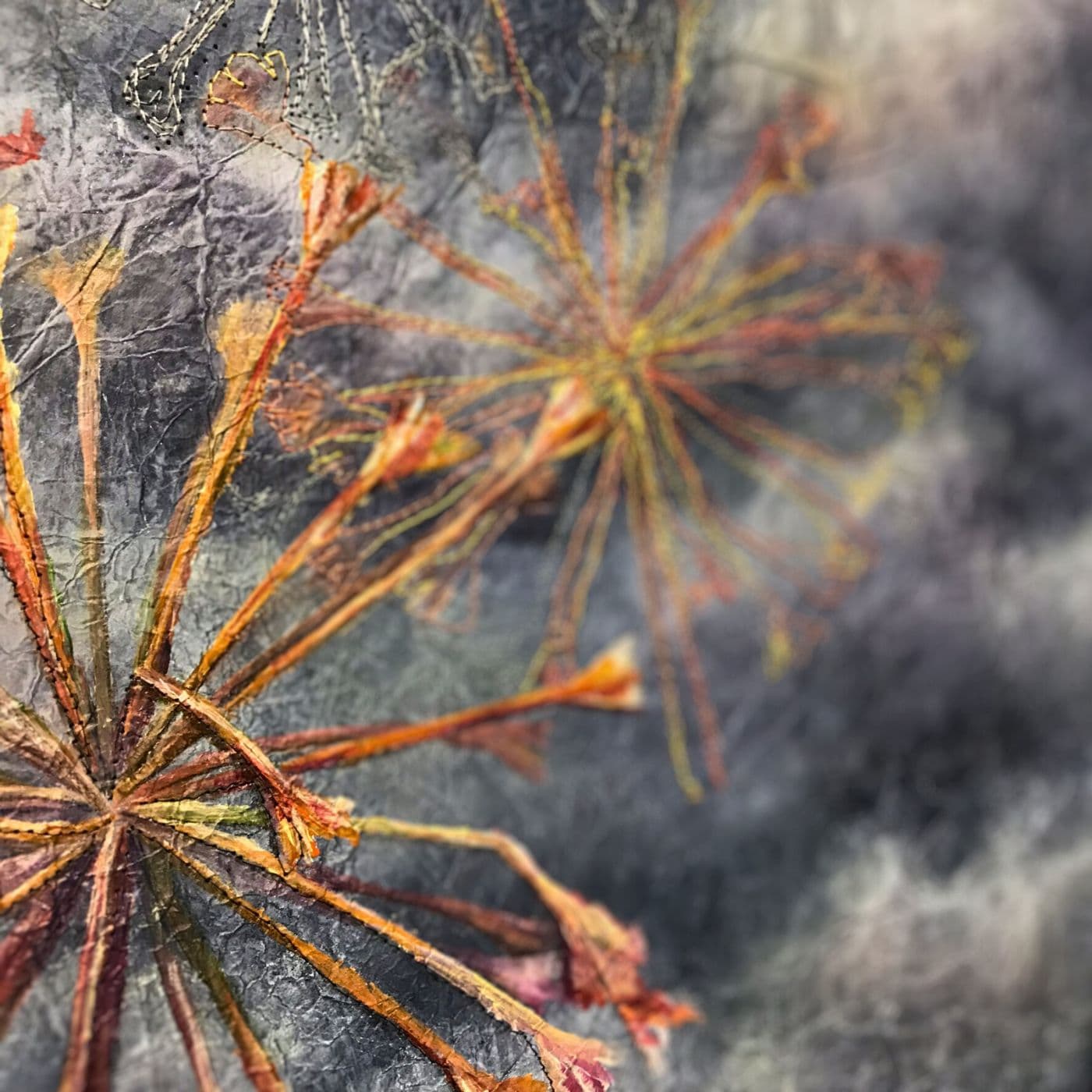
Monique Day-Wilde, Home Turf (detail), 2019. 550 x 900mm. Botanical Prints on Paper, Collage, Acrylic ink, stitching.
Tell us a bit about your chosen techniques and how you use them
Monoprinting is my chosen printmaking method. I roll ink onto a plate (this could be a plastic sheet, Plexiglas, gelatin plate or old X-ray) and then lay the plants on the inked plate. A paper is placed on top, and then that ‘sandwich’ is run through a printing press.
This process creates an image on the inked plate while inking the plants at the same time. It also makes a negative print. I can then remove the plants and print the plate and the inked plants separately or together.
If I’m happy with the quality of the prints, I use them as they are, adding hand and/or machine stitching, as in ‘Dig Deep.’ I might also draw on them too, as in ‘Floating.’
If I’m less happy with a print, I’ll cut or tear it to become part of larger collaged works which I’ll paint and stitch.
As I usually print on paper, I use water based block printing ink, but use Fabric Screen printing ink on Fabric. Other techniques such as rust dying and botanical contact printing (eco-printing) on both paper and fabric are also featured in some of my work.
I am not using much fabric at the moment, but when I do, I prefer finer natural fabrics. Recycled fabric is wonderful as it has usually developed a worn softness and character of its own which can be incorporated into a piece.
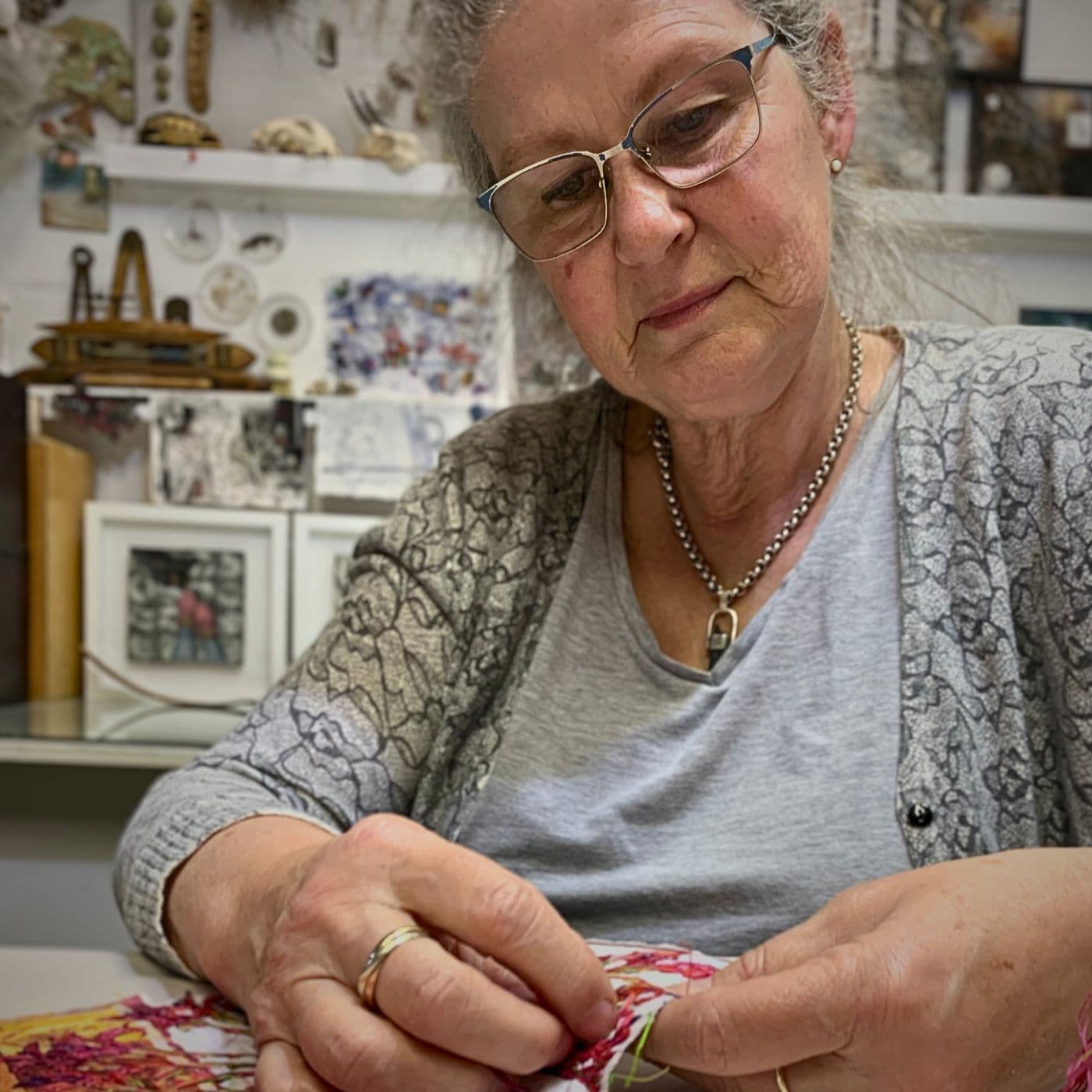
I use a variety of paper from watercolour paper to tissue paper. Rice paper is also a firm favourite and, as I drink copious amounts of tea, tea bags feature often. For me, they are a bridge between fabric and paper and symbolize social connections, dialogue and interaction.
For collage work, I’ll tear or cut the pieces I’m going to use but keep all the ‘bits and pieces’ that are left over to use in other collages. Also, when painting, I sometimes blot my work with waste copy paper which I keep. The textures and colours of those papers can be very useful.
I’ll often weave longer left-over strips together, using them as both warp and weft. I then incorporate those weavings into another piece, usually overprinting to create a new image (see ‘Interface’). In this way, there is a subtle connection between one work and another.
When painting my paper collages, I use acrylic paint thinned with a gloss or matte paint medium (to preserve the integrity of the paint) or acrylic ink. I prefer my paint to be transparent so that the prints are not concealed. I may also add extra colour with Inktense or coloured pencils.
When painting fabric, I use Screen printing ink and Inktense pencils.
I use machine and hand stitching, both separately and together. And when hand-stitching, I prefer simple stitches like straight, running, chain and couching for textural effect. I choose threads mainly for colour and weight, depending on what I feel is needed.
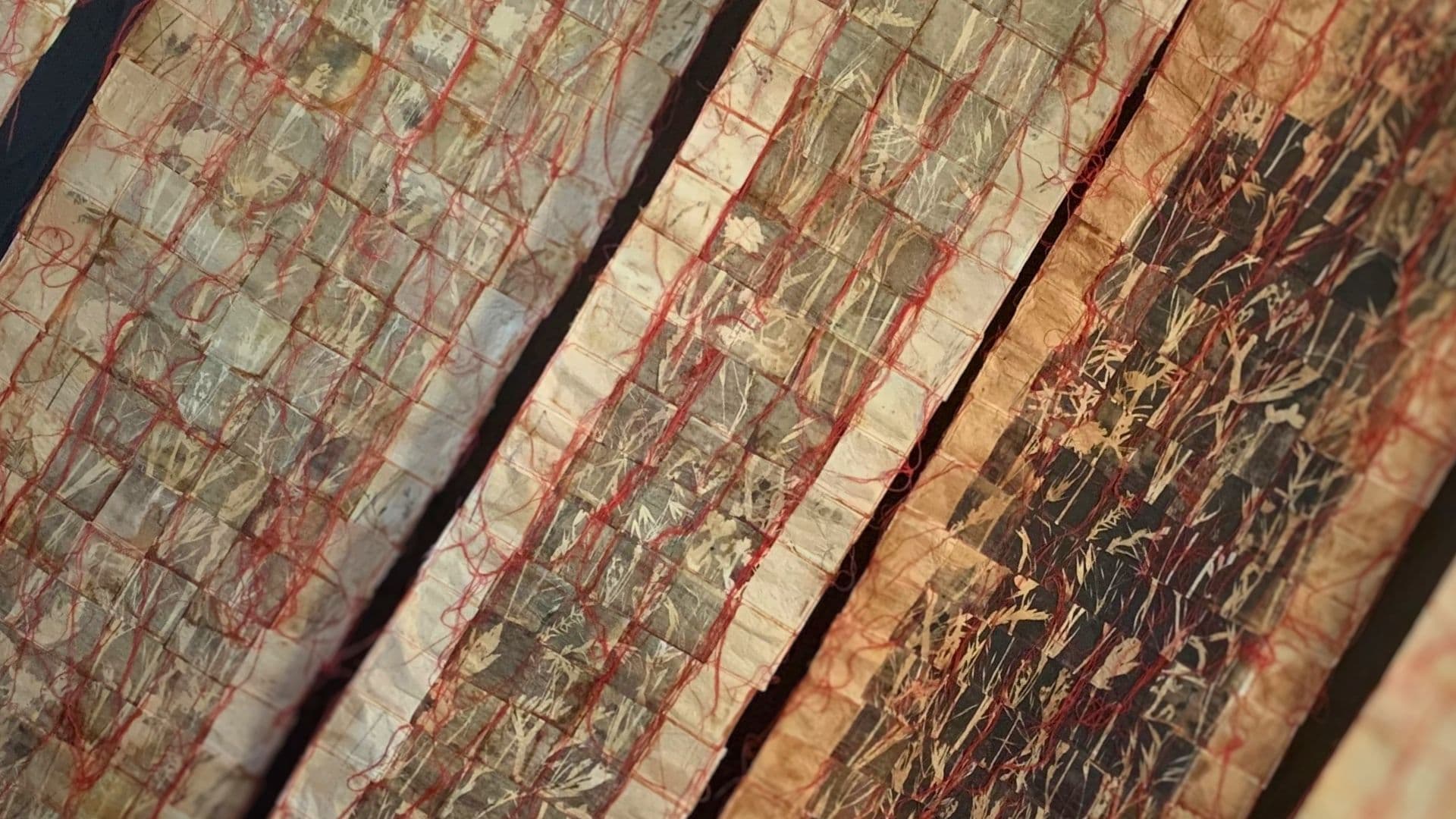
What currently inspires you?
Living as an artist in my small seaside village provides great inspiration with about 1,800 plant species, many which are endemic. The use of those plants creates a sense of place for me, and the stitching is my tie to it.
I am also concerned with environmental issues, so the wonderful work being done by many other textile artists really inspires me. Textile art has transformed over the last few decades with artists constantly pushing and questioning the boundaries of textiles. And it continues to blur the line between what is traditionally considered ‘women’s craft’ and ‘fine art.’
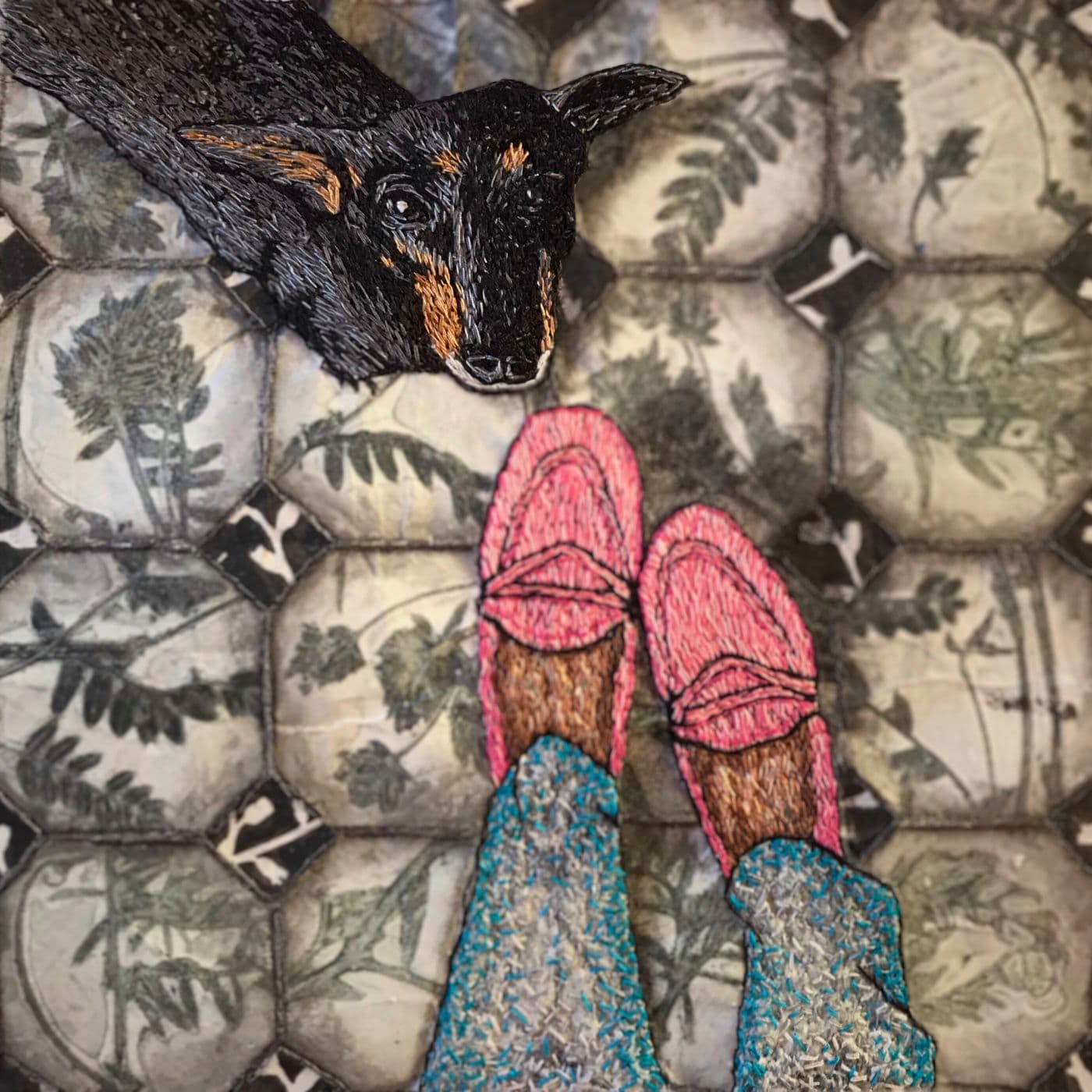
Surrounded by possibilities
Tell us about a piece of your work that holds particularly fond memories and why?
One of my fondest pieces is also fairly recent. During lockdown, we were not allowed to go for walks, and our little Dachshund Scout simply couldn’t understand why her great life’s pleasure was not happening.
That spurred me to make a small series of work called ‘So, can we go for a walk now?’ using images of Scout and some friends’ dogs. Sadly, she recently passed away, so this piece will always be precious to me.
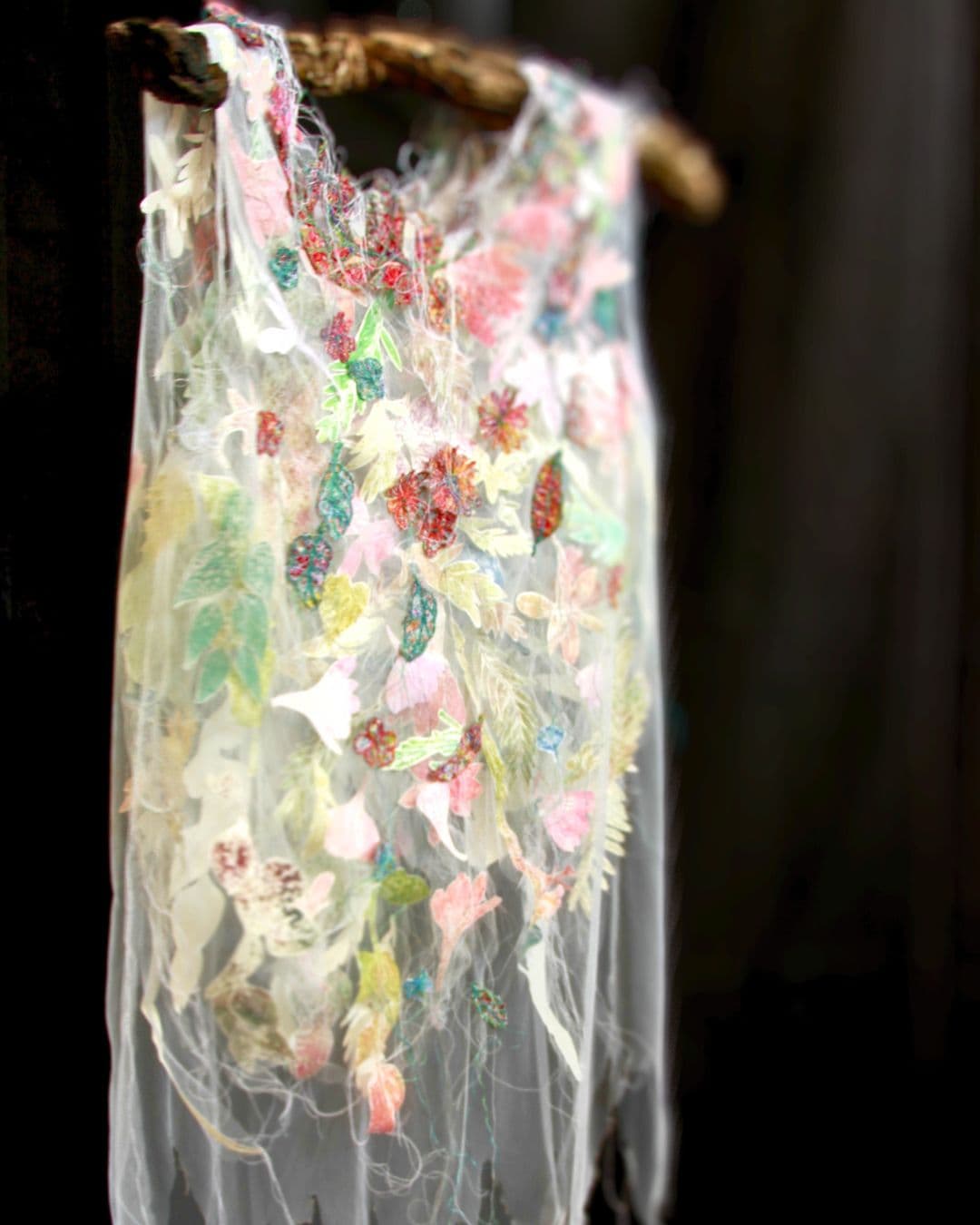
How has your work developed since you began and how do you see it evolving in the future?
Having started out designing bespoke rugs and tapestries, my work has developed in different directions over the years. And the various books I’ve written and co-written were also a huge influence at their time of writing.
But I only felt completely at home in my work when I moved to my current location. The fauna and flora here have a great influence, and I hope to continue exploring the techniques I’m using, as I feel I haven’t exhausted the possibilities.
I love to experiment. But I also find that one work evolves from the previous work, so I am never quite sure where I am going!
I do like the unpredictability, as all sorts of possibilities arise that I didn’t consider at the start.
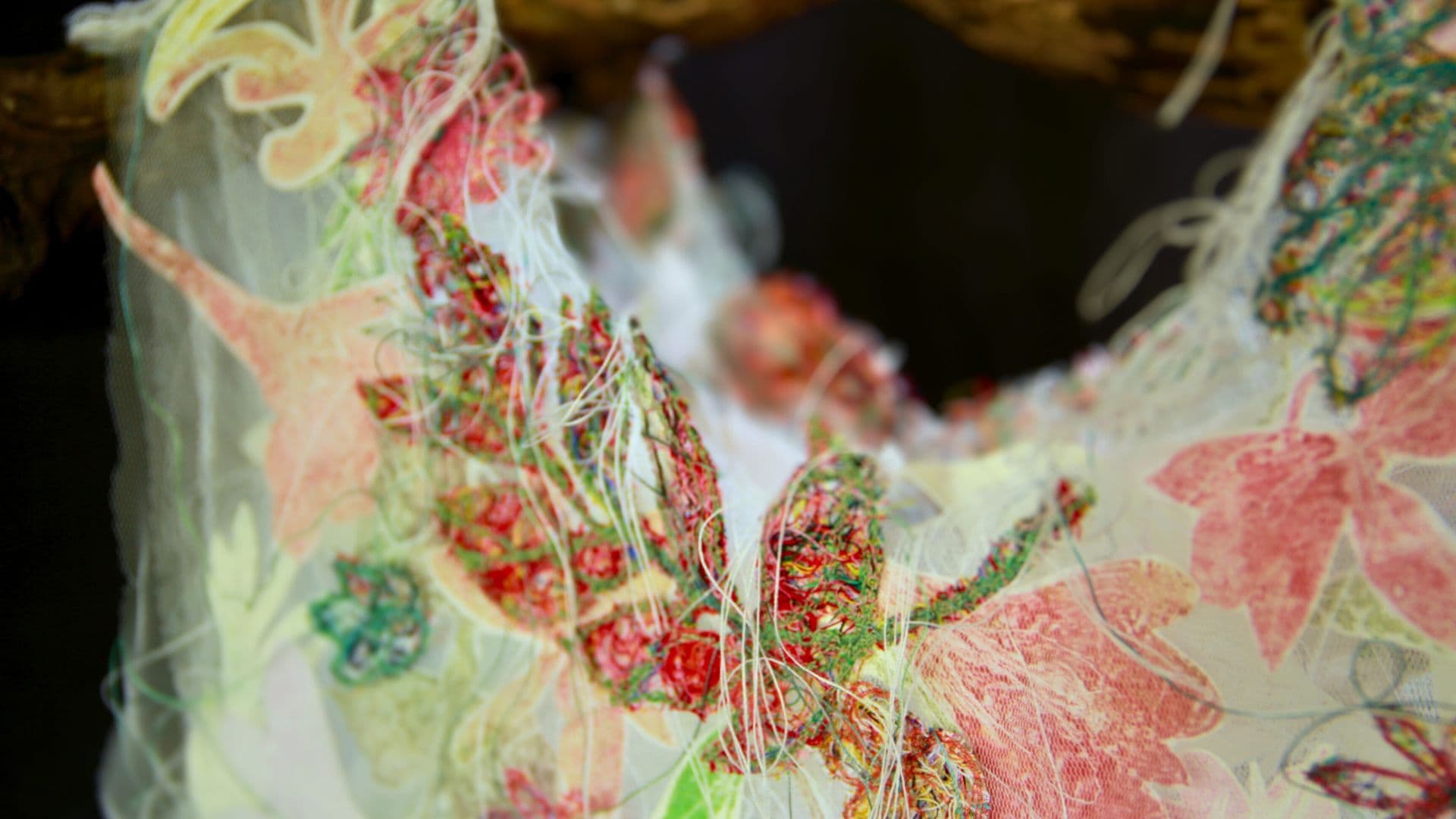

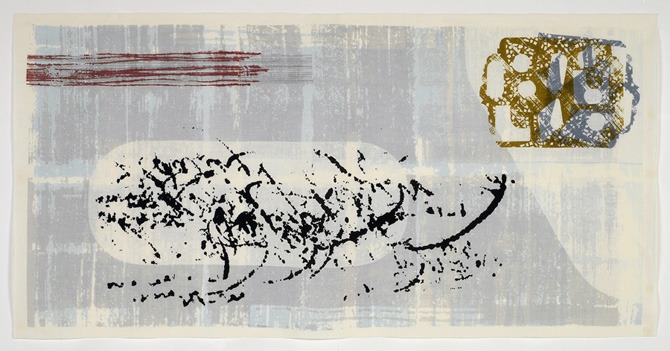
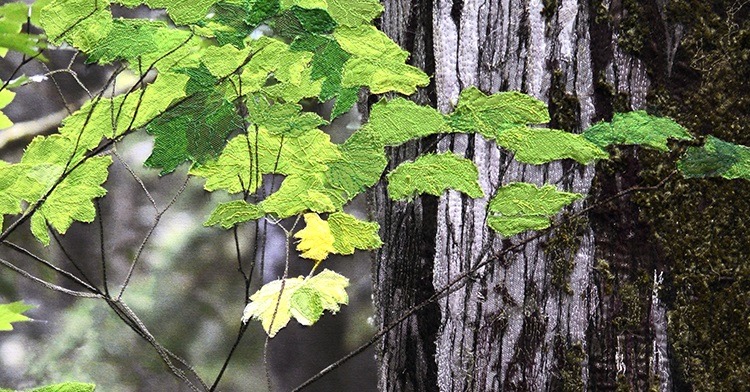
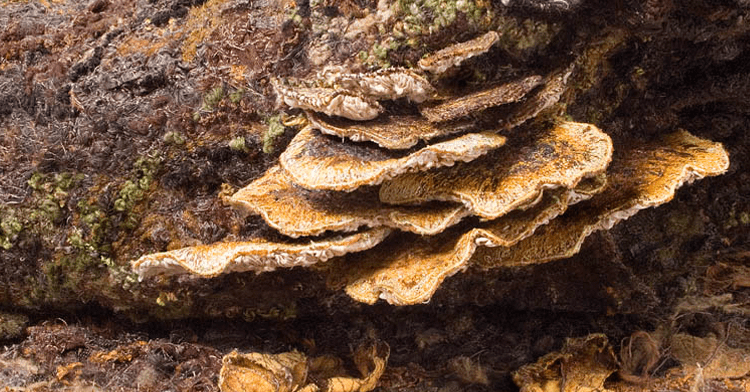
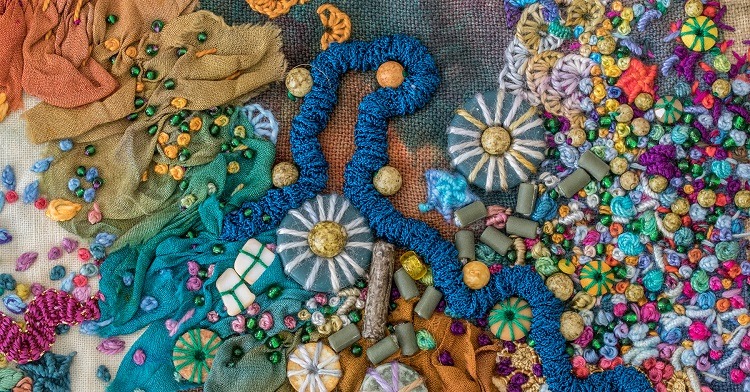
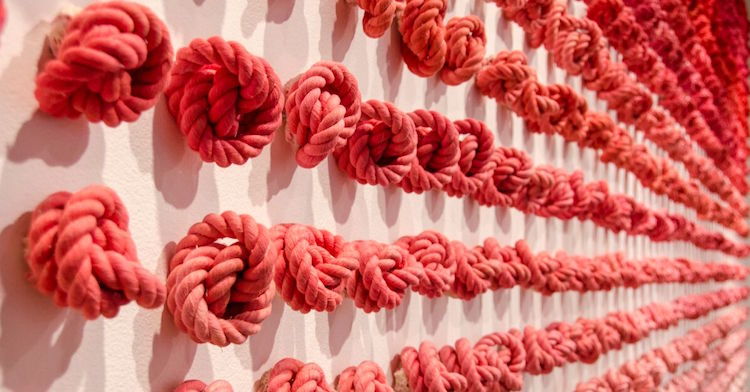
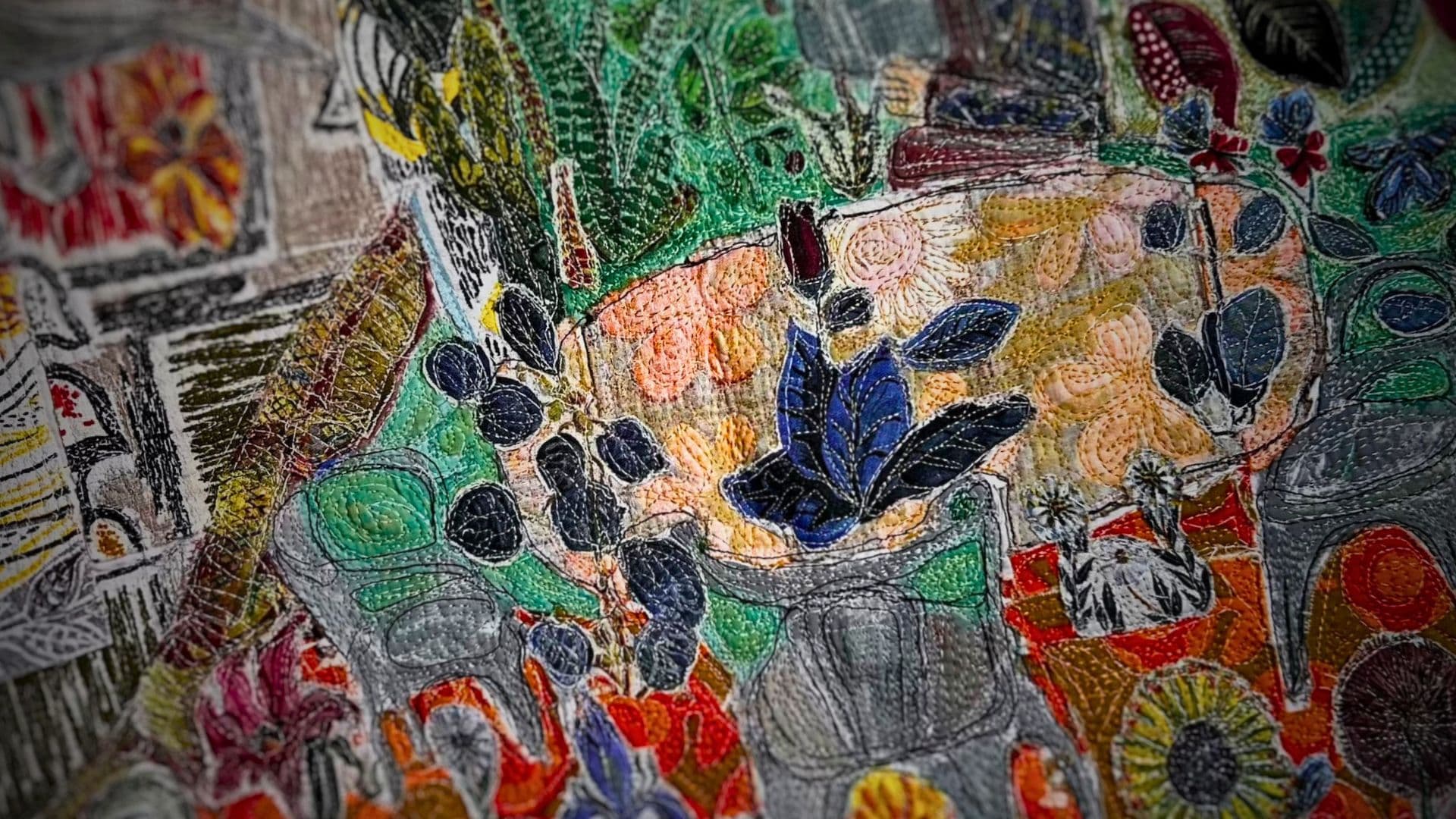
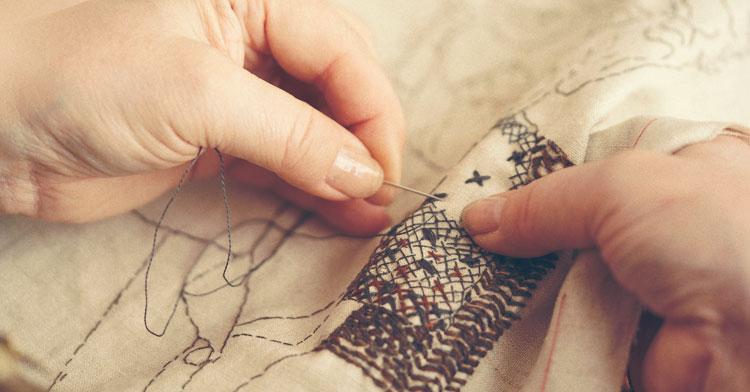
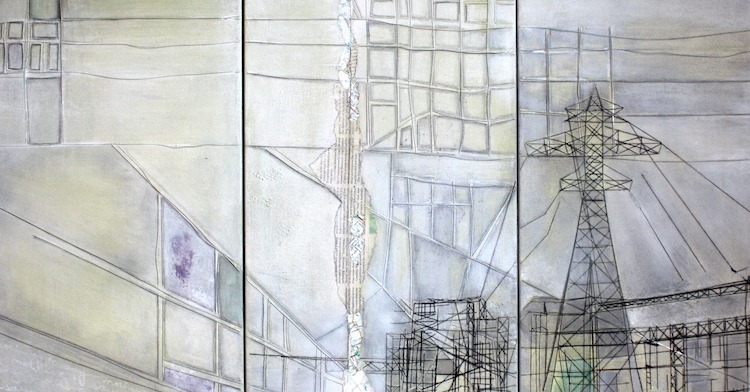
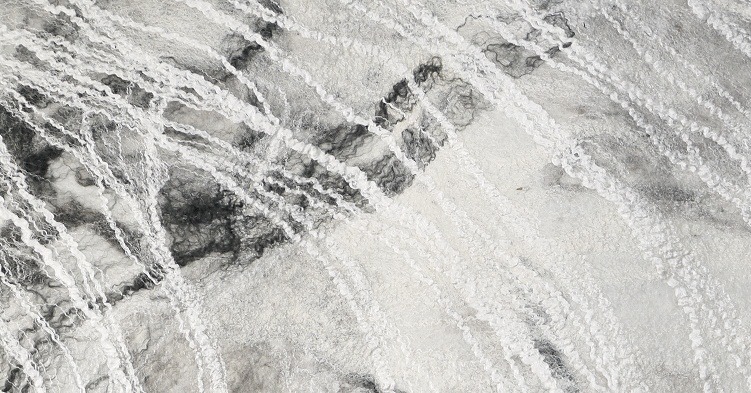
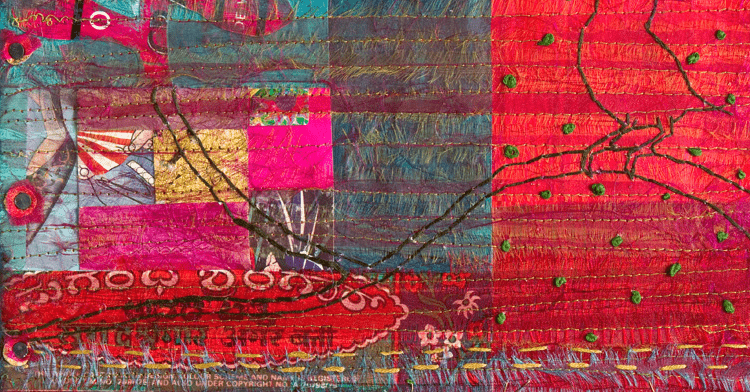
Comments